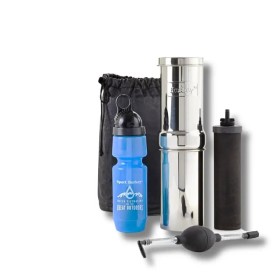Chlorothalonil pollution of drinking water
The Anses, the French National Agency for Food Safety, has just published a study, dated 6 April 2023, concerning the presence of pollutants, deleterious to humans, in drinking water. The aim of this study was to highlight the presence of chemical pollutants that are not included in the regular analyses carried out as part of the potability control. This study focused on 157 pesticides and the residues resulting from their degradation (metabolites).
Unsurprisingly, and unfortunately, 89 of these 157 pesticides were detected in raw water (rivers, lakes, groundwater, etc.) and 77 in treated water intended for human consumption! These poisons, resulting from the use of conventional agriculture, are more and more numerous and are gradually spreading in the environment and in our bodies.
The Anses study sheds particular light on chlorothalonil, a fungicide banned in Europe since 2019, found in more than half of the samples and exceeding the quality limit in more than a third of the analyses! This pollutant joins the long list of pollutions that invade our organisms and the whole environment, and this in all legality. The authorities, when authorising their marketing, know full well what future pollution is expected from the spreading and degradation of these poisons.
Even if this study concerns water pollution in France, we know that this problem is European and even worldwide and that the water consumed, whether it comes from the domestic network, from bottles or drawn from nature, is increasingly polluted with chemical residues that are more and more numerous and all of them dangerous for human health.
Today, 20 million French people drink water that does not comply with regulations, as has been published in several surveys (and yet tap water in this country is considered to be of high quality), but what about in other European countries?
While waiting for the authorities to take their responsibility by banning these molecules (one can dream), trust the Berkey® filters which allow the elimination of more than 200 harmful substances, including 99.99% of chlorothalonil.
Share this content
Related products








































